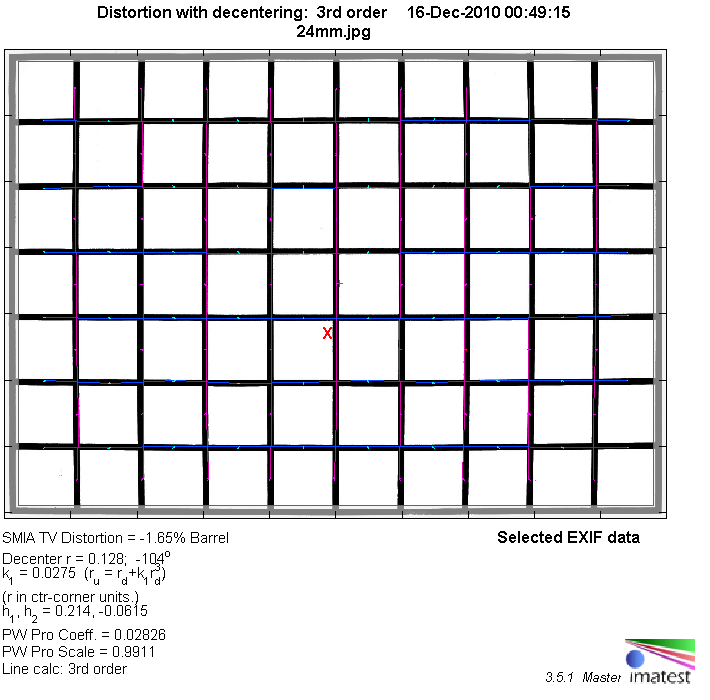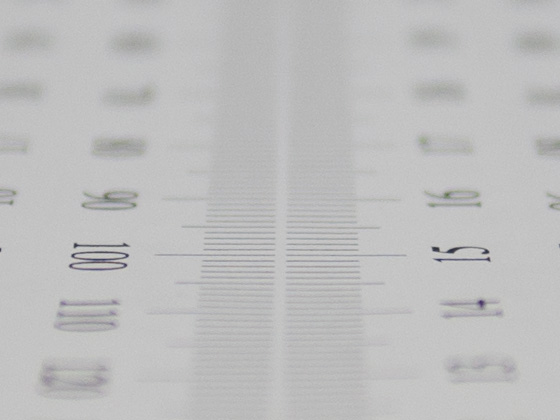|
Zeiss Distagon T* 24mm f/2 ZA SSM (SAL-24F20Z) - Full Format Review / Lab Test - Analysis |
|
Lens Reviews -
Sony Alpha (Full Format)
|
|
Page 2 of 2

Distortion
The Distagon produces a moderate amount of barrel distortion (~1.7%). This may be visible at times and it's marginally higher than on its Canon and Nikon counterparts.

Vignetting
Wide angle lenses tend to produce some vignetting on full format DSLRs and the Zeiss lens is no exception to the rule here. At max. aperture the light falloff exceeds 2EV which is easily visible in the majority of situations. The issue is reduced significantly at f/2.8 and acceptable from f/4 onwards.

MTF (resolution)
The Zeiss produced outstanding resolution figures in our APS-C test and while it isn't quite as good in the full format scope anymore, it remains impressive. The center resolution is very high straight from f/2 and the border performance is more than acceptable as well. However, the extreme corners are relatively soft at this setting. The image quality is generally very good at f/2.8 with an exceedingly sharp center. The global peak performance is reached around f/5.6 with an exceptionally high quality across the whole image field. Diffraction effects reduce the quality from f/11 onwards but the lens remains, of course, easily usable at this setting.
Please note that the MTF results are not directly comparable across the different systems!
Below is a simplified summary of the formal findings. The chart shows line widths per picture height (LW/PH) which can be taken as a measure for sharpness.
If you want to know more about the MTF50 figures you may check out the corresponding Imatest Explanations
Chromatic Aberrations (CAs)
Lateral chromatic aberrations (color shadows at harsh contrast transitions) are generally quite low with an average width of around 1px at the image borders. This is usually not disturbing in final prints.

Bokeh Fringing / Longitudinal Chromatic Aberrations (LoCA)
Bokeh fringing, also called "LoCAs", is a color fringing effect at hard contrasts with purple halos in front and green halos beyond the focus point. The Zeiss lens isn't absolutely flawless here but there're only marginal traces of LoCAs at f/2. The effect is basically irrelevant from f/2.8 onwards.
|
Move the mouse cursor over the f-stop marks below to observe the respective LoCAs
|
| f/2 |
f/2.8 |
f/4 |
f/5.6 |
|

|
Verdict
The Zeiss Distagon T* 24mm f/2 ZA SSM may not be as fast as its Canon and Nikon counterparts but it's capable of delivering a better image quality at comparable aperture settings. It avoids the glory but also the difficulties of an ultra-large f/1.4 aperture in favor of a much higher peak performance. There's still a bit of corner softness at f/2, but beyond it unleashes its full potential. The image quality is already very good at f/2.8 and excellent if not outstanding (within the full format scope) at medium apertures. The Zeiss lens produces a moderate amount of barrel distortion which is typical for a lens in this class. Unfortunately the Zeiss designers were not able to solve the common vignetting problems at large aperture setting - the light falloff can be very obvious here. The quality of the bokeh is very good for such a kind of lens (albeit average in absolute terms) and bokeh fringing (LoCAs) is also very well controlled. The build quality of the Zeiss lens is exceptionally high thanks to an all metal design and tight tolerances. Sony's SSM AF delivers a flawless performance offering both very fast and near silent AF operations.
|